Cantonese temple in Sims Drive, 19 pre-WWII bungalows in Adam Park mooted for conservation
Sign up now: Get ST's newsletters delivered to your inbox
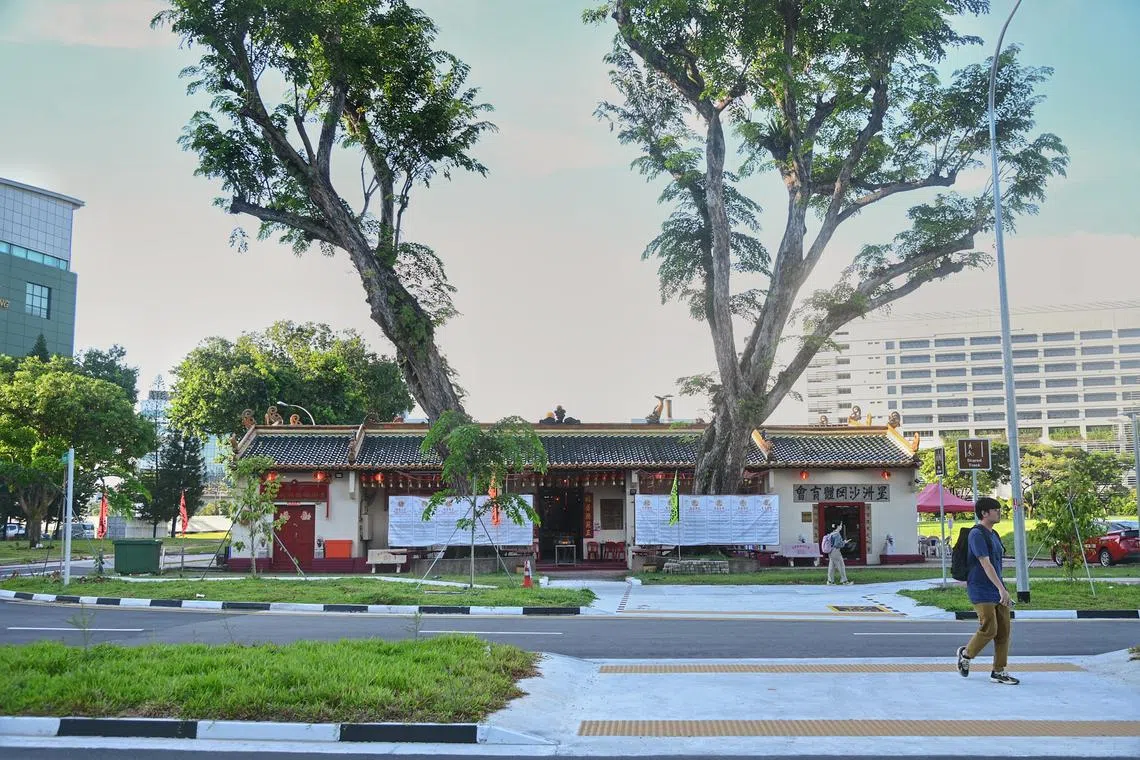
The Mun San Fook Tuck Chee temple in Sims Drive has a pair of Angsana trees at its entrance that are thought to be at least a century old.
ST PHOTO: DESMOND WEE
Follow topic:
SINGAPORE – The Mun San Fook Tuck Chee temple in Sims Drive and 19 pre-World War II bungalows in Adam Park will be proposed for conservation by Singapore’s urban planning agency.
On Nov 8, National Development Minister Desmond Lee said the Urban Redevelopment Authority (URA) plans to propose conservation of these two sites as the agency works on the next Draft Master Plan, set for release in June 2025.
He was speaking at URA’s 2024 Architectural Heritage Awards ceremony.
In a statement, URA said conserving these sites would “protect their built heritage as important physical markers that capture the collective history and memories of our nation and different communities”.
The Sims Drive temple, dating back to the 1860s, is one of Singapore’s oldest surviving Cantonese temples.
It is a rare marker of an early settlement in the area called “Sar Kong village”. Its inhabitants worked in nearby brick kilns, sago processing workshops and tanneries, URA said.
The temple was a hub for the community, setting up the now defunct Mong Yang Chinese School and the Sar Kong Athletic Association, which is still active and promotes lion and dragon dance.
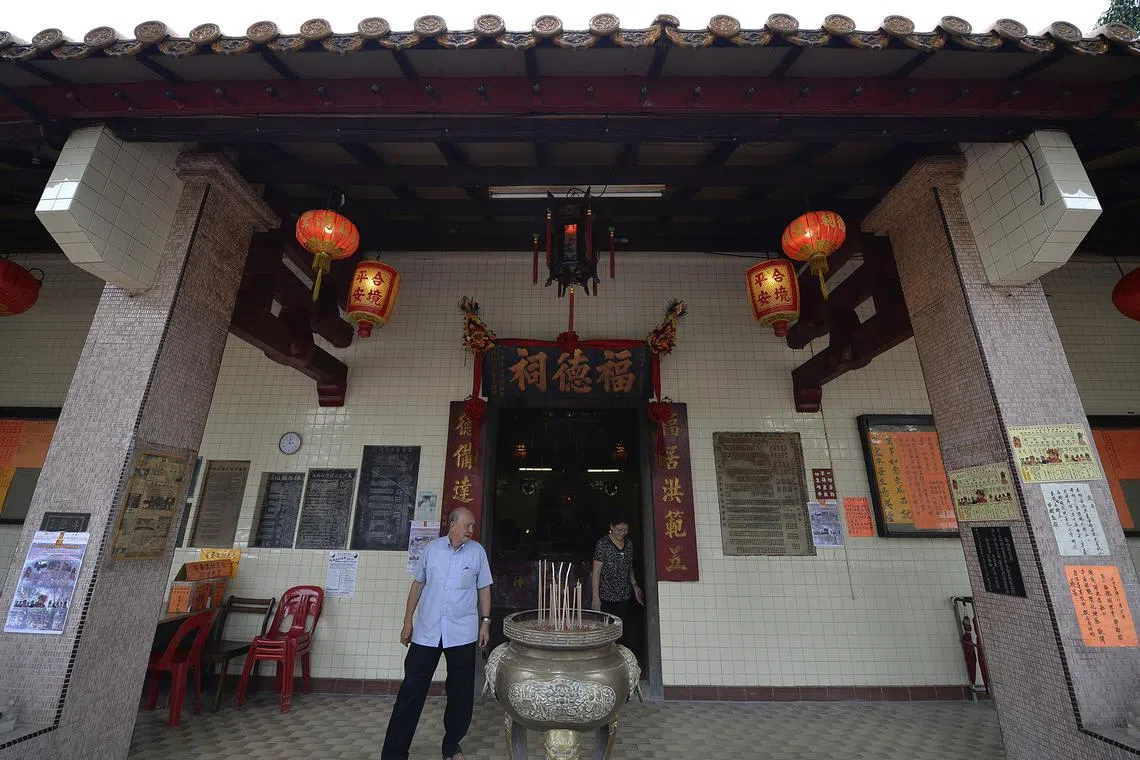
The entrance of Mun San Fook Tuck Chee temple on January 2014.
PHOTO: ST FILE
Speaking to The Straits Times on the sidelines of the event, Mr Toh Yong Soon, the temple’s vice-chairman, said the proposal to have it conserved comes after many years of uncertainty over the temple’s fate
The temple’s previous long-term lease expired in 2009, and it has been on yearly temporary occupation licences since then.
Mr Toh added that the temple’s management is in discussion with the authorities to take on a fresh 30-year lease once the building has been conserved.
He noted that the temple continues to play an active role in the community and is a spot frequented by residents to socialise.
“Being conserved means that a landmark of the neighbourhood that connects the past and the present will remain,” Mr Toh said.
As for the 19 bungalows in Adam Park, Mr Lee said they were the site of an intense three-day battle during World War II and had also housed a prisoner-of-war (POW) camp during the Japanese Occupation.
URA said up to 3,000 British and Australian POWs were held in Adam Park after the British surrendered on Feb 15, 1942.
Many of the POWs were made to work at the nearby MacRitchie Reservoir on the Syonan Jinja shrine, traces of which can still be found today.
URA said there is still evidence of the site’s use as a POW camp, including a POW calendar etched into the wall of an outhouse at 5 Adam Park and a chapel wall mural painted on the upper storey of 11 Adam Park.
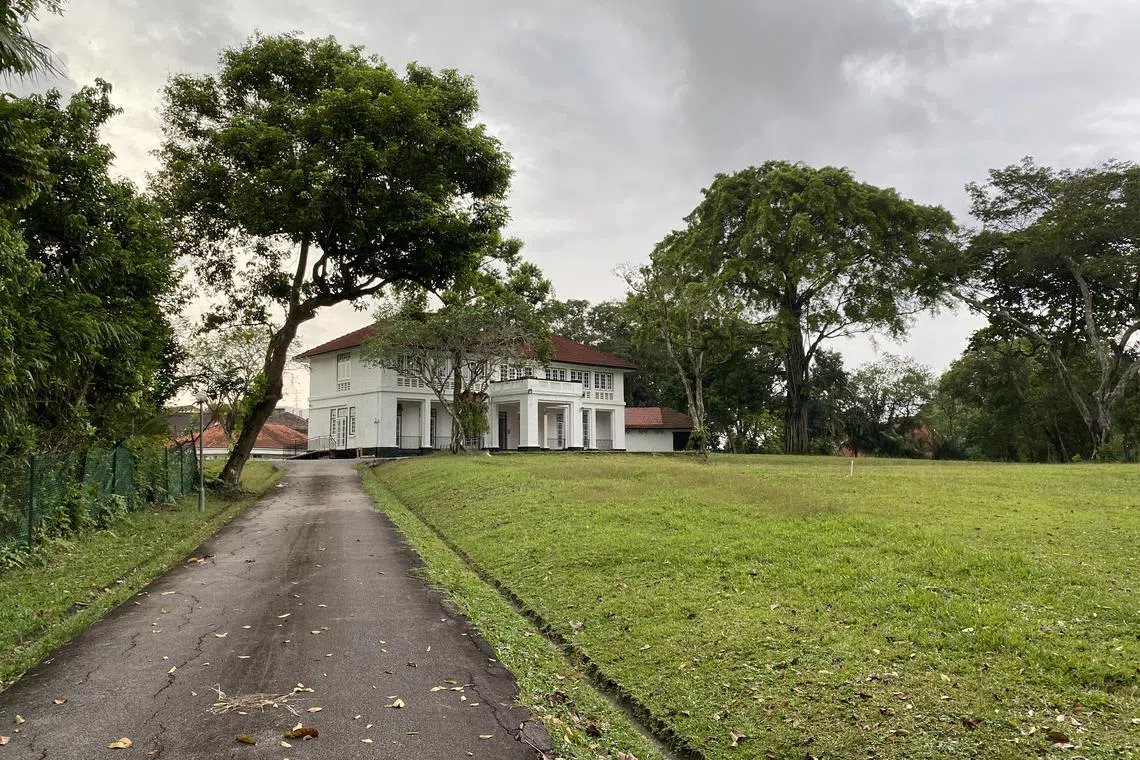
A two-storey bungalow that is part of the Adam Park site.
PHOTO: URBAN REDEVELOPMENT AUTHORITY
Previous studies in the estate had unearthed a sizeable number of wartime artefacts
Of the 19 bungalows being proposed for conservation on the 12.8ha site, 14 are partly embedded in the slopes of the area, creating partial basements, while five are large two-storey bungalows located on higher ground.
The bungalows are currently managed by the Singapore Land Authority and leased out for residential use.
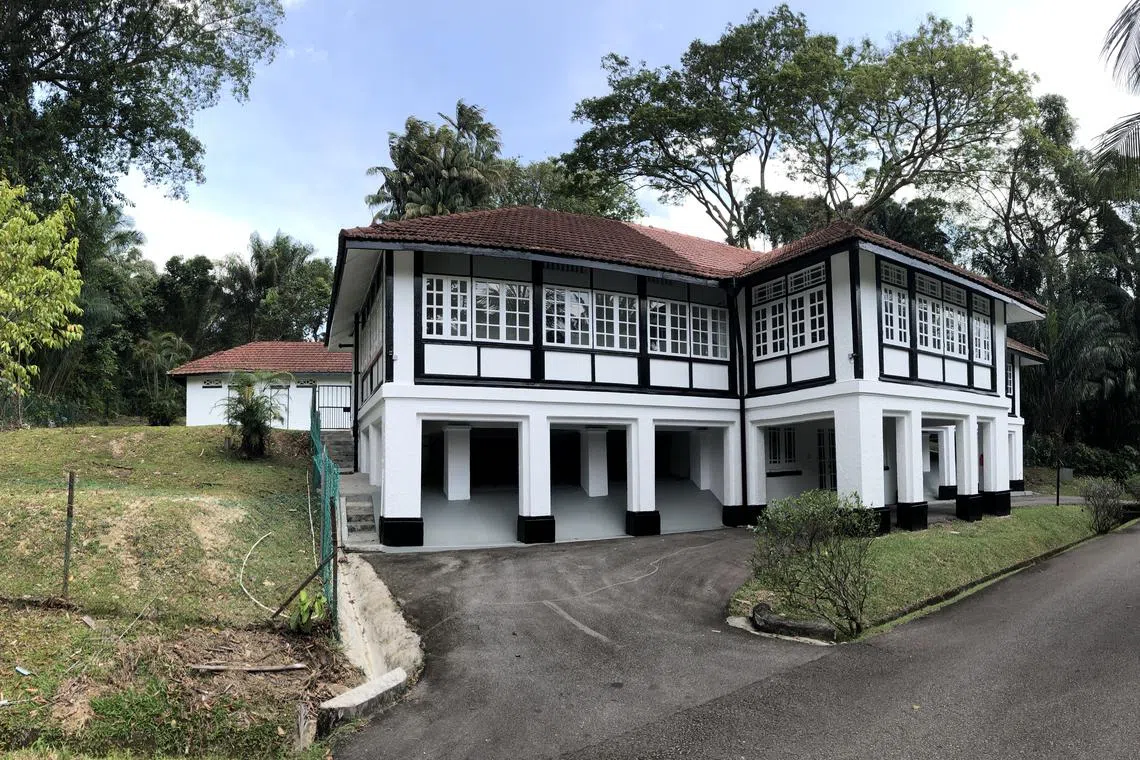
One of the 14 1½ storey bungalows within the Adam Park site proposed for conservation.
PHOTO: URBAN REDEVELOPMENT AUTHORITY
Heritage author and blogger Jerome Lim told ST that he hopes beyond conserving the site’s bungalows, the authorities will also retain its undulating landscape, which impacted how World War II battles were fought in the area.
Citing the upcoming Mount Pleasant estate, which will include Old Police Academy buildings proposed for conservation, Mr Lim said it is quite common for buildings to be retained, but their “landscape destroyed, with the physical quality of the surrounding areas lost”.
He noted that the terrain of the area is reminiscent of the English countryside and would have given the area’s British residents a sense of home.
URA also said it takes a “highly selective approach to conservation, conserving only buildings and structures of the highest significance” due to Singapore’s limited land.
The announcement that these two sites will likely be conserved was made at the biennial awards ceremony held at 5 Jiak Kim Street, in a property that includes three conservation warehouses which previously housed the nightclub Zouk.
Launched in 1995, the awards recognise well-restored national monuments and conservation buildings.
Speaking at the ceremony, Mr Lee said heritage anchors Singaporeans’ sense of place and strengthens their collective identity. He added that one way to recall Singapore’s rich history in development plans is to conserve buildings and structures.
He said everyday places such as schools, workplaces and public spaces also “play a significant role in capturing our memories and creating a sense of place”.
While Singapore could not conserve every old building due to its limited land, it could retain key elements of buildings that are most meaningful or put up markers to commemorate the history of buildings or sites, he said.
He cited the old Jurong Fire Station’s tower, which was incorporated into the playground at the new Boon Lay Glade project by the Housing Board.
Mr Lee also pointed to the project at 5 Jiak Kim Street, which has a heritage trail containing art installations and storyboards telling the story of the Singapore River to complement the conservation of the three warehouses that were formerly 17, 19 and 21 Jiak Kim Street.
The project was one of five that received an award for conservation on Nov 8. Four other projects received a special mention.

National Development Minister Desmond Lee, accompanied by co-founder of Studio Lapis and architectural conservation consultant Ho Weng Hin (left), viewing a display on the restoration of former warehouses at 17, 19 and 21 Jiak Kim Street, on Nov 8.
ST PHOTO: JASON QUAH
URA’s 11-member assessment committee said the project, led by P&T Consultants, showed how “creative storytelling can help to raise public appreciation of the important socio-economic history of Singapore River and the once prevalent godowns”.

Three former warehouses at 5 Jiak Kim Street that have been conserved.
ST PHOTO: JASON QUAH
Another project that received a conservation award was the Bukit Timah Railway Station project, on which Kay Ngee Tan Architects and conservation specialist Yeo Kang Shua worked, and was the only 2024 awardee to be given a mark of distinction.
The station has been refurbished and is now used as a heritage gallery, with restored quaint clay roof vents, an old ticket counter and antique gear levers among the features that visitors can see.
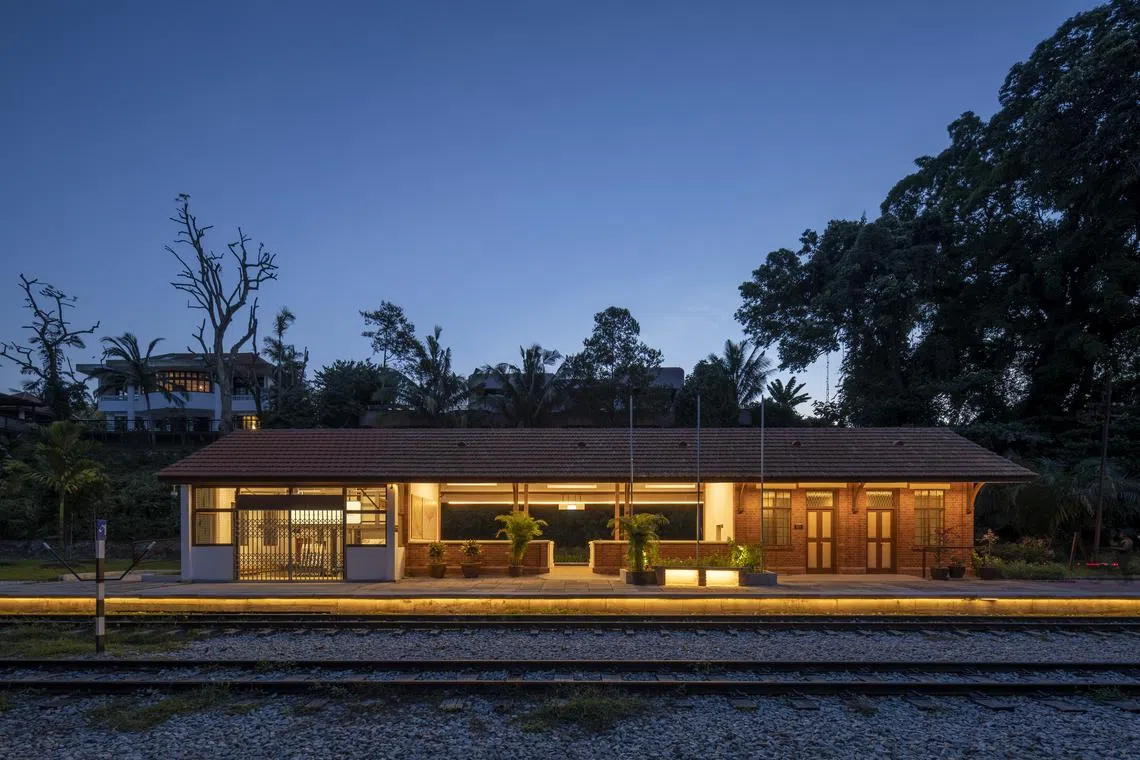
The Bukit Timah Railway Station has been refurbished and is now used as a heritage gallery.
PHOTO: DARREN SOH
“Old steel tracks creatively recycled as arm rests for timber benches and two authentic style railway service wagons parked on the remaining railway tracks purposefully complete the image of a bygone era,” the committee said.
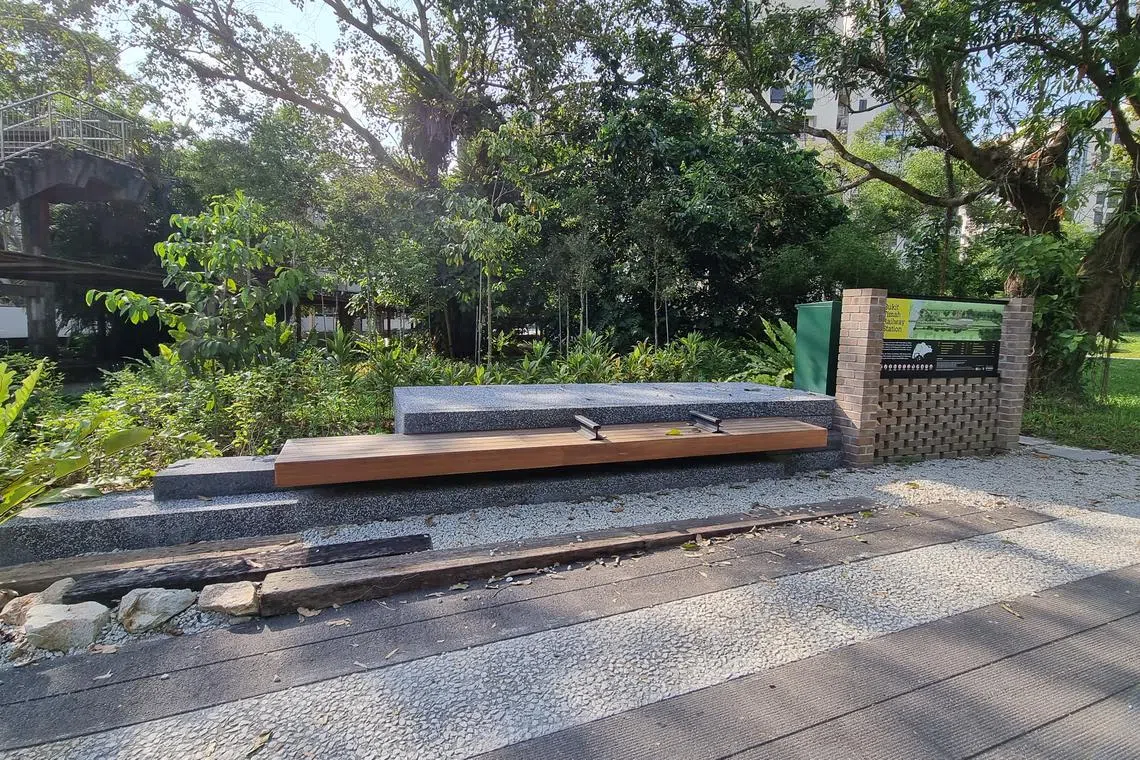
Old steel tracks were repurposed as armrests near the old railway station.
PHOTO: KAY NGEE TAN ARCHITECTS
To find out more about the nine award-winning projects, the public can visit an exhibition that will be held at The URA Centre in Maxwell Road from Nov 11 to Dec 30, from 9am to 5pm, Mondays to Saturdays.
URA 2024 Architectural Heritage Awards winning projects
Award for Conservation (Distinction): Bukit Timah Railway Station
Award for Conservation: Bukit Timah Truss Bridges; 59 Emerald Hill Road; Former 17, 19 & 21 Jiak Kim Street Warehouses; St Joseph’s Church, Victoria Street
Special Mention: 12 Mount Sophia; Golden Bell Mansion; Malabar Mosque; Sri Mariamman Temple
Correction note: This story has been edited for accuracy.


